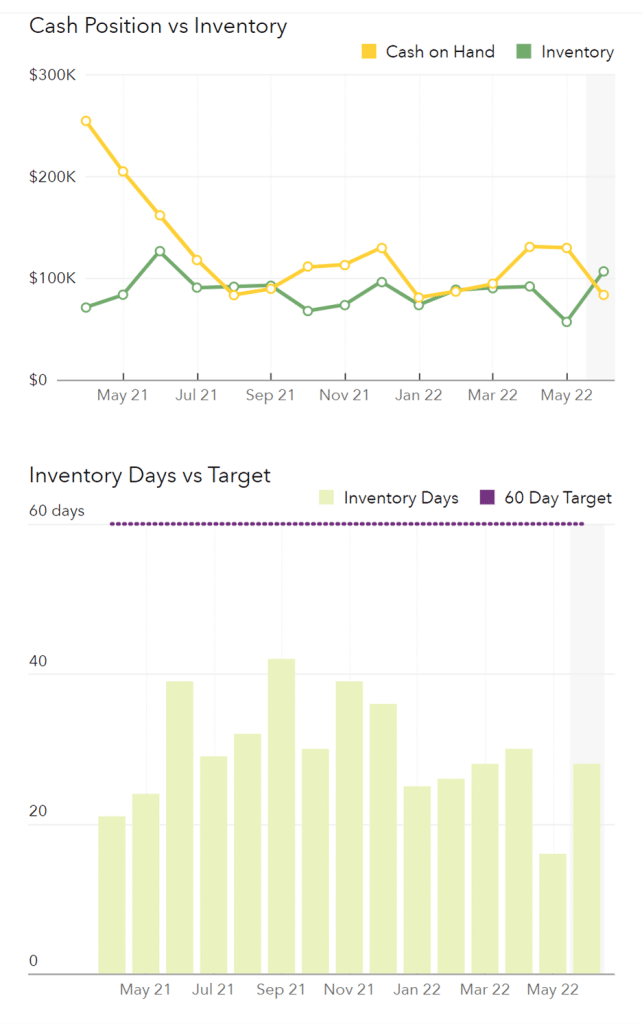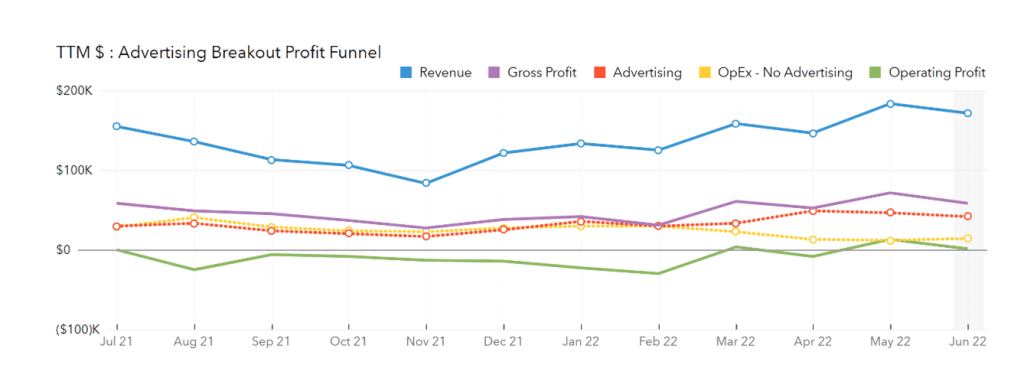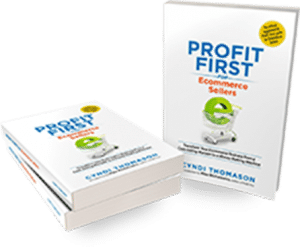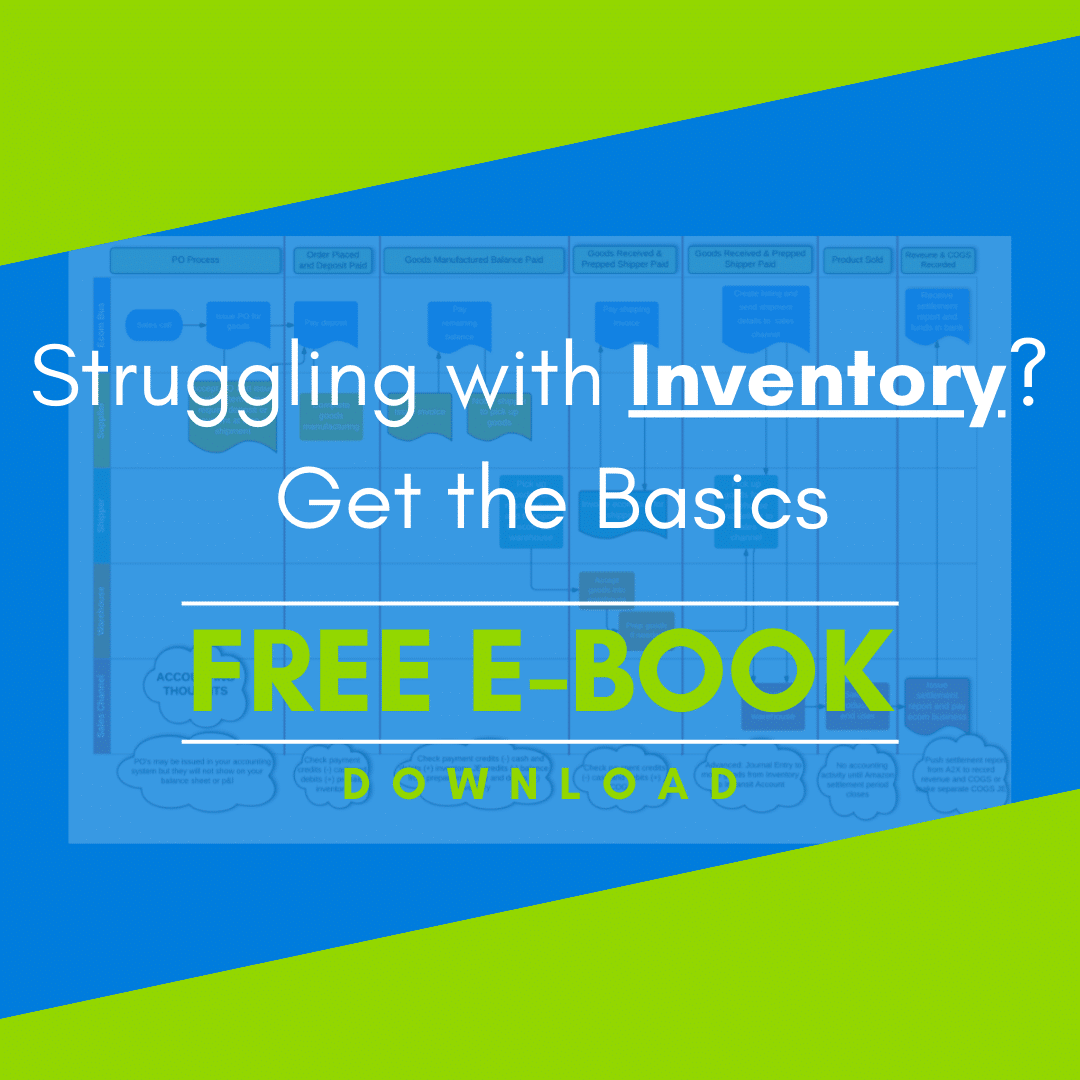
For any ecommerce business, understanding its performance is crucial for growth and sustainability. While Gross Margin remains a fundamental metric, there are several others worth delving into. Let’s explore three key KPIs, how to calculate them, what insights they offer, and the benchmarks to aim for.
Inventory Days
Inventory Days assess how efficiently you convert inventory into sales. The formula for this metric is:
Inventory Days = (Inventory x Month Length in Days) / Total Cost of Sales
This is a vital KPI because a high number indicates excess cash tied up in stagnant inventory, impacting your liquidity. Conversely, a low number signals the risk of stockouts. Regularly monitor this metric to find the optimal balance.
We typically target 60 days initially, adjusting it based on individual business needs. Note that this calculation assumes accrual or modified cash accounting. I’ve included an example of the Inventory Days graph that we provide clients in our customized SmartStatement financial reports.
We use this graph also to help clients monitor their connection between cash and inventory. Using Profit First, the inventory bank account should grow as stock decreases, and then the reorder brings the numbers closer to balance.

Media Efficiency Ratio (MER)
MER evaluates the effectiveness of advertising spending. The formula for this metric is:
MER = Total Revenue for the Period / Total Ad Spend
While this metric provides a holistic view, it doesn’t delve into specific campaign or product performance. It’s common for businesses to receive positive reports from ad agencies while experiencing disproportionate increases in ad spending compared to revenue.
Monitor MER monthly without strict benchmarks, as it varies widely. Visualizing this with tools, like the funnel graph from our SmartStatements, can aid in understanding income relative to gross margin and expenditure on advertising and operating expenses.
Once you’ve looked at the bigger picture, you can start looking at performance on a product level. It’s important to stay on top of your ad spend for each product so you aren’t spending tons of money on a product not giving you much in return.

Average Unit Retail (AUR)
AUR represents the average selling price of a product and helps compare sales across channels and products. The formula for this one is:
AUR = Total Sales Dollars / Number of Items Sold
Tracking AUR over time helps you understand product and business trends, guide pricing, marketing, inventory management, supplier relationships, and channel performance.
While various tools assist in monitoring product-level performance, they often lack reconciliation with financial statements. By reconciling your bank accounts, credit card accounts, and loans back to statements generated by the bank or lending company, you can help maintain data accuracy and confidence in your numbers.
Where to Start
Incorporating these KPIs gradually into your business analysis allows for a deeper understanding of performance trends and implications. Start with Gross Margin, then incorporate Inventory and Advertising metrics before diving into AUR and product-level analysis.
Remember, working with metrics is a journey, not a sudden plunge. Taking incremental steps to understand each one and align them with your business goals effectively is the best way to ensure you’re creating a healthy and sustainable business.
If you’re ready to dive into the metrics but need help creating your financial plan using them, we can help! Reach out to the bookskeep Team today!

If your ecommerce business isn’t where you’d like it to be in terms of profitability, check out my book, Profit First for Ecommerce Sellers. It answers important questions about how to implement Profit First in an ecommerce business. Take control of your money and your business, and put Profit First to work for you!
You can also sign up for the Profit First for Ecommerce Sellers Online Course. As a Mastery Level, Certified Profit First Professional, I will teach you why Profit First works so well for ecommerce businesses and the particular challenges for businesses that have physical products requiring inventory management. You will learn how your behavior drives your money management habits for your business and how you can set up your business bank accounts to work with your habits.
Check out all our ecommerce accounting and profit advising services here!




Leave a Comment